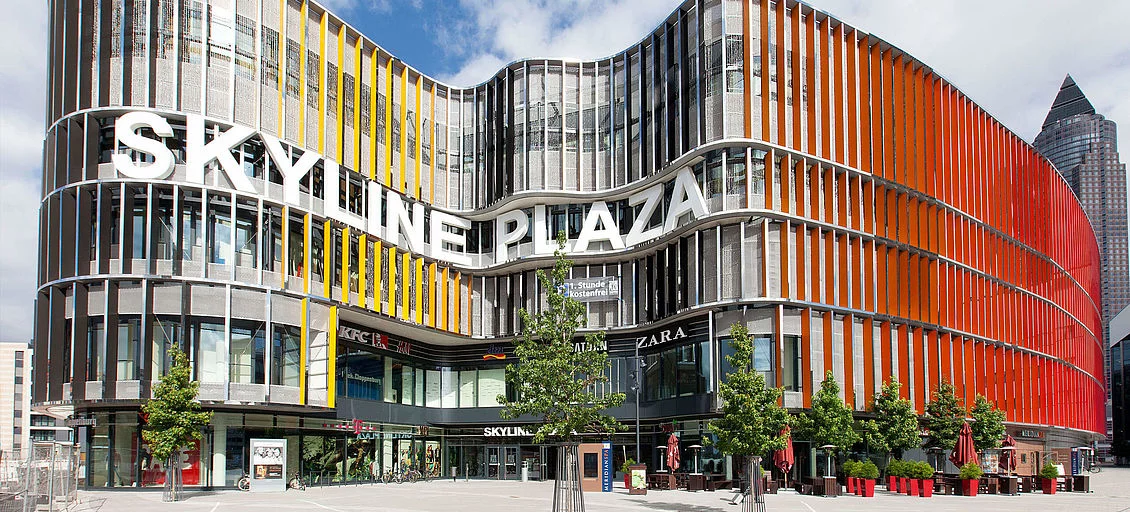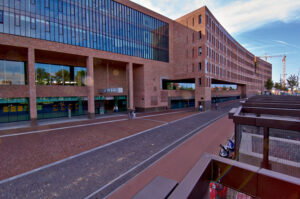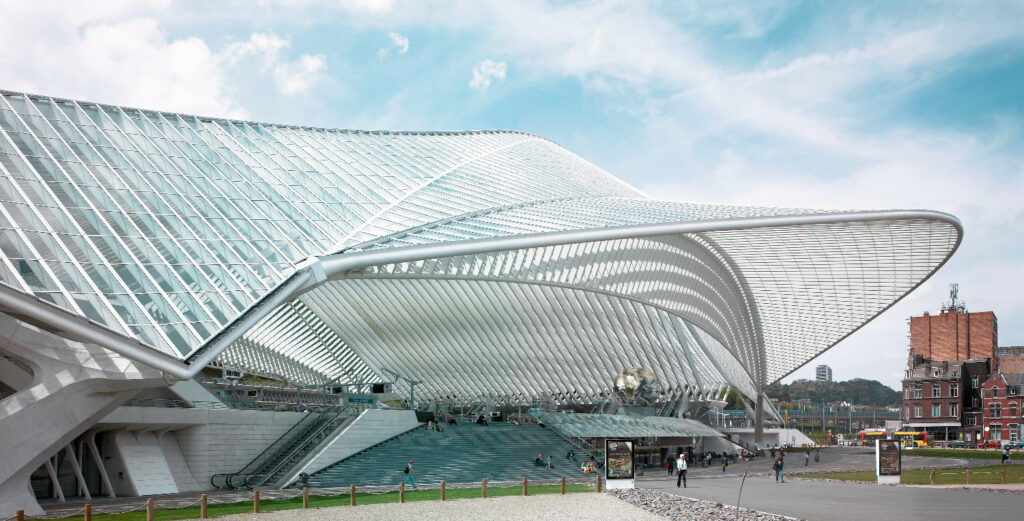
Liège-Guillemins: Liège’s high-speed railway station
The most important railway station in the Belgian city of Liège and the entire Walloon region is Liège-Guillemins station, whose new building was completed in September 2009 to designs by Santiago Calatrava. Thalys and Intercity Express trains stop here, making LiègeGuillemins a hub in the European high-speed network between London, Paris, Brussels, Amsterdam and Cologne/Frankfurt – the journey time between Cologne and Liège is now just under an hour. Every day, a good 500 trains pass through the through station, which is a real landmark with its monumental canopy.
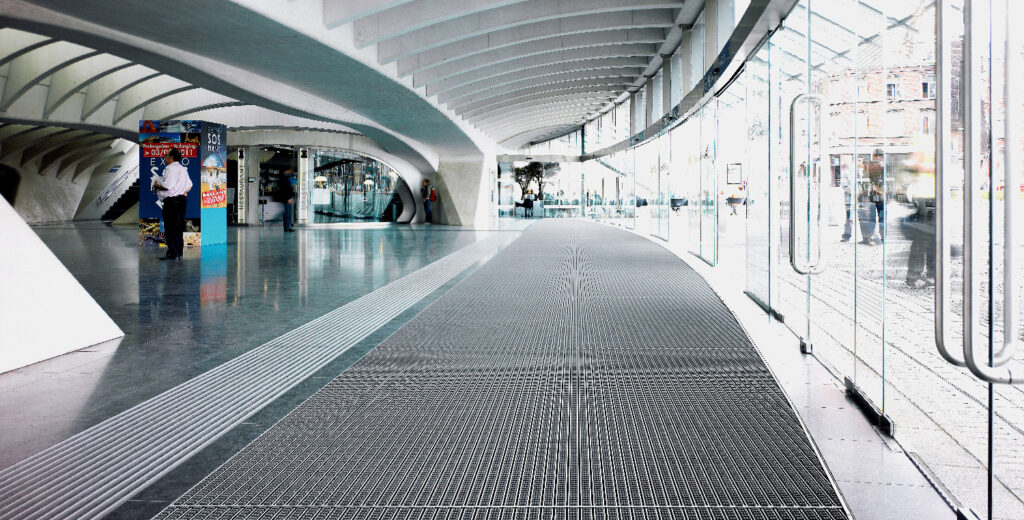
The principles of communication and transparency
This enormous and at the same time filigree roof of steel and glass covers the platforms like an oversized wave and flows into the curved, up to 50-metre-high roofing of the main hall with its area of 33,000 square metres. It is supported by 39 white steel arches, each with a span of 157 metres. Although an impressive total of 11,000 tonnes of steel were used, the modern structure appears transparent and light – no additional lighting is required during the day. Open on all sides, the new building embodies the principles of communication and transparency that, according to Calatrava, should characterise every railway station.
New impulses for the city
A place of communication and transparency that stands in great contrast to what existed before: Where once the dilapidated 1958 railway station tried to cope with the ever-growing rail traffic, a light, radiant work of art made of glass and steel has emerged, providing new impulses for Belgium’s third-largest city – further measures around the station are being planned, and Ron Arad’s recently opened “Médiacité” shopping and media centre sets further accents. The futuristic station complex plays a central role in all these developments.
function.
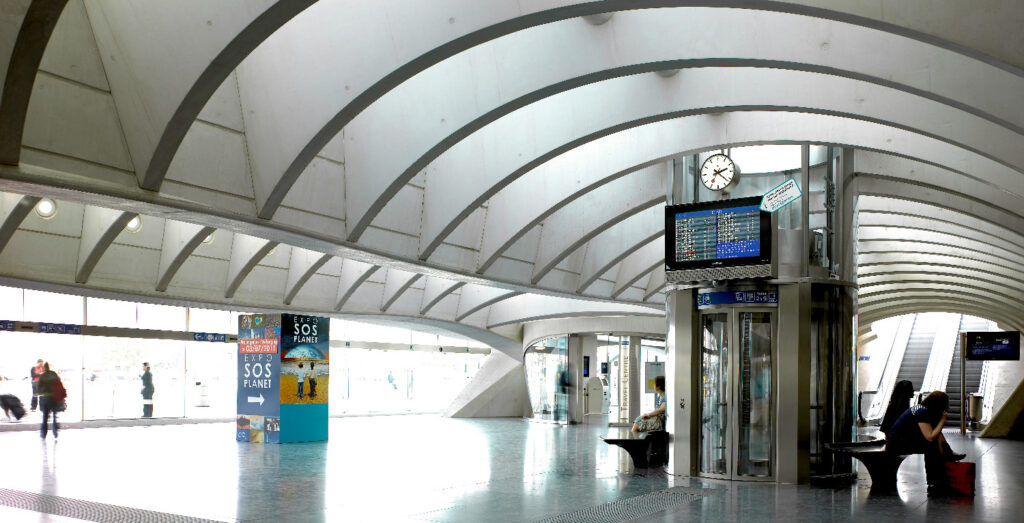
Daylight on all levels
It is not only the outer shell that appears futuristic: Round, curved, organic shapes, Calatrava’s trademark, can be found everywhere in the station. Even the catenary masts on the tracks were specially designed. Parts of the floors on the forecourt and the five platforms are formed by large glass block surfaces that supply the passage below with daylight. In general, Calatrava has also placed great emphasis on one of his central themes in Liège: Every point of a building should be largely reached by daylight – in Liège-Guillemins, even the parking decks are open to the tracks for this reason.
“When a building is planned with such detail and thought, everything has to be coherent – right down to the entrance mats.”
Vincent Bourlard,
Chief Executive Officer, Euro Liège TGV
A “cathedral of mobility
Due to many aspects, for example the size and the lighting situation, the new station is often referred to as a “cathedral of mobility”: Calatrava designed the station hall to be so large that it would tend to fit an entire train inside. The hall, which stands at right angles to the direction of the tracks, is intended to reconnect the neighbouring districts of Cointé, which was built on a slope, and Guillemins, which stretches flatly towards the Meuse. They have been separated for more than 100 years because of the railway line. A connecting, bright and forward-looking building.
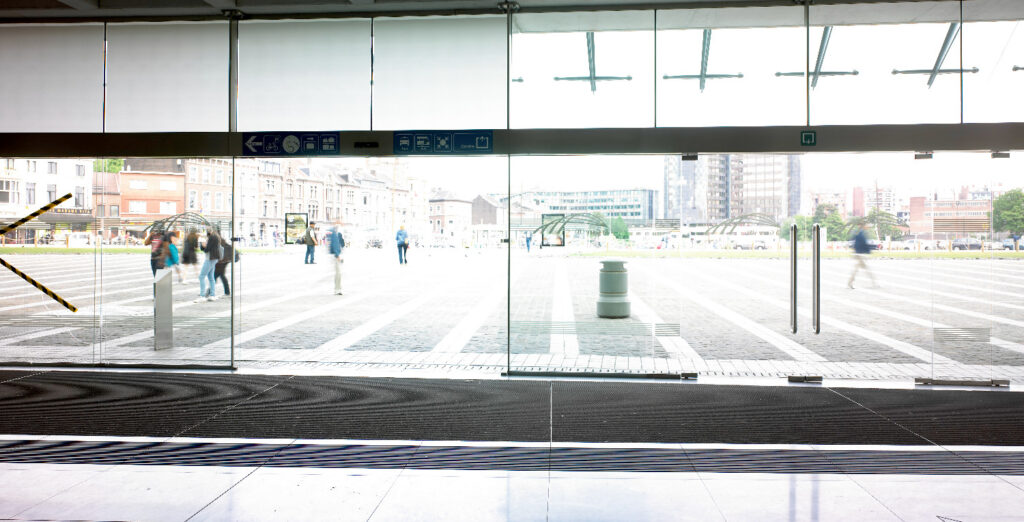
Details for perfect functioning
To ensure that the station remains bright and clean in the future and fulfils its function as a traffic junction unimpaired, all details were carefully planned – right down to the entrance mats in custom-made special shapes. Here, the decision was made for an effective cleaning effect with emco Marschall entrance mats, which have proven themselves every day since the opening of the new station building.
